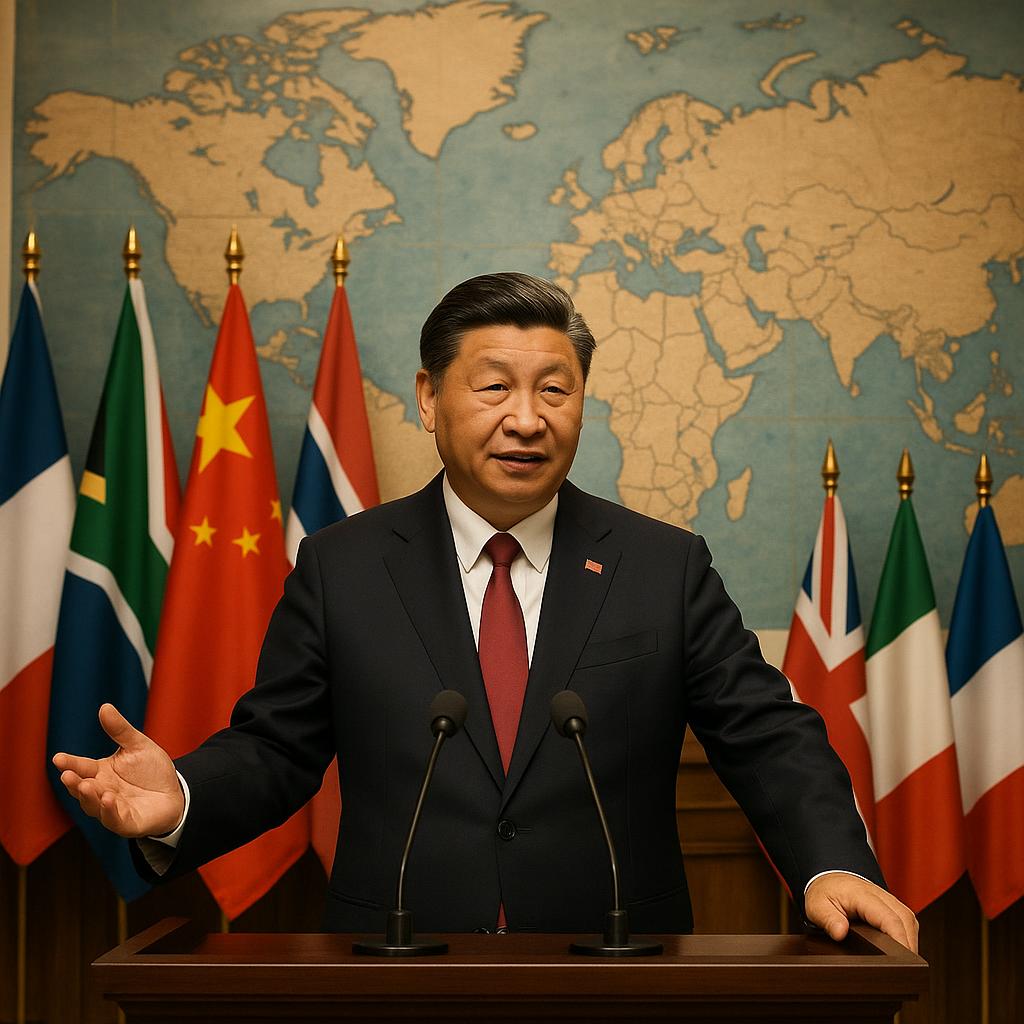Economic Headwinds and Global Ambitions: How Xi Jinping’s Domestic Challenges Shape China’s Foreign Policy
As Chinese President Xi Jinping navigates his unprecedented third term in power, his administration faces a complex balancing act between pressing domestic economic troubles and ambitious global initiatives.
These domestic challenges are not merely internal affairs but significant factors shaping China’s foreign policy trajectory in the coming years.
China’s economy, once the world’s most reliable growth engine, now confronts multifaceted challenges that test Xi’s leadership.
According to Foreign Policy magazine’s January 2025 report, “economic growth cratered as unemployment, bankruptcies, and capital outflows soared” during 2024, creating significant pressure on Xi’s leadership.
The challenges include:
- Property Sector Crisis: Major developers face insolvency in a sector that previously contributed up to 30% of China’s GDP
- Youth Unemployment: Rates have reached historic highs, creating social stability concerns
- Demographic Decline: An aging population threatening future growth prospects
- Local Government Debt: Estimated to exceed $10 trillion, constraining policy options
- Foreign Investment Retreat: Capital flows have decreased amid geopolitical tensions
These economic challenges constrain resources available for global initiatives.
But at the same time provide greater incentive for using the foreign policy environment to cover up domestic problems.
Despite these domestic economic pressures, Xi has continued advancing his comprehensive foreign policy framework.
Since 2021, he has unveiled three major initiatives that together form what analysts call China’s “alternative global governance architecture.”
We wrote about the “Big Three” in a recent article, namely the Global Development Initiative, the Global Security Initiative and the Global Civilization Initiative.
Xi’s administration has made strategic adjustments to its foreign policy approach in response to domestic economic constraints:
The pandemic prompted a strategic evolution of the BRI rather than a retreat. Post-pandemic, the BRI has developed new dimensions including the “Health Silk Road” and increased focus on digital infrastructure.
Beijing first announced a version of the Health Silk Road in 2015, but it garnered little attention. In 2020, however, China used the COVID-19 pandemic to breathe new life into the project, with Xi delivering a major address before the World Health Assembly promoting China as a hub for medical resources,” accoddring to an article in Foreign Affairs.
These adaptations reflect a more cost-effective approach to global influence amid domestic economic constraints.
Xi has doubled down on technological self-sufficiency as both an economic and foreign policy strategy. Industrial policies like Made in China 2025 involve state-supported development of strategic high-tech industries to reduce foreign dependence.
Xi has apparently calculated that “doubling down on high technology while eschewing a bailout for the real estate sector will ultimately put China’s economy on a stronger footing over the long term,” despite the short-term economic pain this approach entails.
A defining characteristic of Xi’s approach is the integration of economic and security objectives. Critics have noted that his “linking of the GDI with China’s new Global Security Initiative is concerning, inextricably tying development efforts with Beijing’s security interests.”
This integration reflects Xi’s broader vision for China’s international positioning. Prior to his leadership, China avoided suggesting it offered a “model” for other countries. Xi, however, has “explicitly made the case for China as a model,” positioning the country as “qualified to be a leader in shaping a new international order.”
China is facing a situation where domestic challenges may actually accelerate rather than diminish certain foreign policy initiatives, particularly those with high visibility and nationalistic appeal.
Rather than seeking to overthrow existing global institutions, Xi has pursued a two-track approach: working within organizations like the United Nations while simultaneously building parallel structures and initiatives that reflect Chinese priorities.
“In Xi’s vision, global institutions and norms will be underpinned by Chinese notions of common security and economic development, Chinese values of state-determined political rights, and Chinese technology,” according to the Foreign Affairs article cited earlier in the article.
As domestic economic pressures intensify, several patterns are likely to characterize China’s foreign policy in the period ahead:
- Strategic Selectivity in Global Engagements: Prioritizing initiatives that offer maximum international influence at manageable economic cost
- Increased Focus on the Global South: Deepening relationships with developing nations where China’s economic model and governance philosophy may find more receptive audiences
- Defensive Posture on Human Rights Criticism: Leveraging the Global Civilization Initiative to deflect Western criticism of domestic policies
- Continued Technological Competition: Maintaining or even increasing investments in strategic technological sectors despite overall economic constraints
- Opportunistic Crisis Diplomacy: Using global crises as opportunities to demonstrate leadership alternatives to Western-led institutions
Xi Jinping’s balancing act between domestic challenges and international ambitions represents one of the most consequential dynamics in contemporary geopolitics.
His administration’s ability to manage this tension will substantially shape the evolution of the international order.
The featured image was AI generated in response to the question of Chinese President Xi Jinping’s vision of his global leadership.

